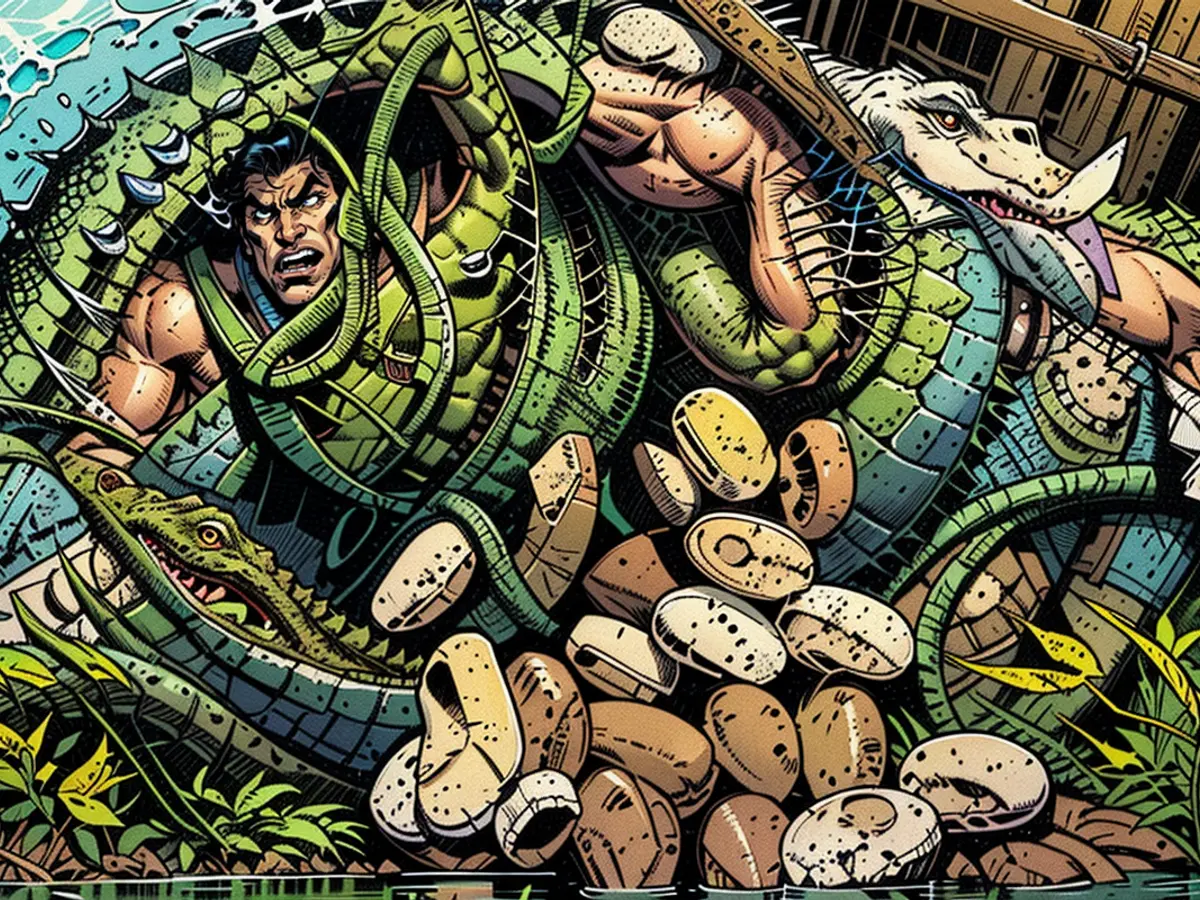Dozens of Siamese crocodiles hatched in Cambodia
The population of Siam crocodiles continues to shrink. Worldwide, there are approximately 1000 specimens in the wild. The joy in Cambodia is great, as many eggs of the critically endangered species were found in a wildlife protection area.
In a wildlife protection area in Cambodia, conservationists discovered 106 eggs of an extremely rare crocodile species: The Siam crocodile (Crocodylus siamensis), which is only found in parts of Southeast Asia, is listed on the IUCN Red List as "critically endangered." Land Management Minister Dith Tina spoke of a significant success in the fight for the protection of these heavily endangered animals.
This is the largest discovery in over 20 years that the species is still reproducing in the wild, according to the organization "Flora & Fauna." It works with the government to strengthen the wild population of Siam crocodiles. Estimates suggest that there are only about 1000 wild specimens worldwide, of which 300 are in Cambodia.
60 Mini-crocodiles hatched
The discovery increased the chances of survival of this reptile species enormously, it was further reported. The eggs were found in May in a national park in the Cardamom Mountains in the southwest of Cambodia. A total of 60 baby crocodiles hatched at the end of June.
The population of Siam crocodiles has mainly declined due to hunting and the loss of their natural habitat. The authorities are working with conservation organizations to revive the populations - with success.
The animals have been bred in captivity for years and then released into the wild. It is also important to provide them with a suitable habitat where they are safe from poaching and deforestation, said "Flora & Fauna" country director Pablo Sinovas.
Indigenous people revere the species
Since 2012, a total of 196 captive-bred Siam crocodiles have been successfully released as part of the program. A big help in this were the local indigenous people, who revered the crocodiles, it was reported. Among them, it is taboo to kill or harm Siam crocodiles.
The animals can grow up to four meters long and have a relatively wide snout. They live exclusively in sweetwater habitats such as rivers, lakes, or swamps. According to IUCN, there are still specimens in the wild in Thailand, Laos, and in Kalimantan, the Indonesian part of Borneo.
The successful hatching of 60 mini-crocodiles in Cambodia has reignited hope for the conservation of the critically endangered Siam crocodile. This event takes place in the context of Asia, where education about animal protection and nature conservation is essential to ensure the survival of such species.
The discovery of Siam crocodile eggs in a wildlife protection area in Cambodia is a significant step towards animal protection, as this species is critically endangered in various parts of Southeast Asia. Efforts in Cambodia, such as this, contribute to the broader goal of protecting animals across Asia.
The indigenous people of Cambodia play a crucial role in animal protection by revering the Siam crocodile and considering it taboo to harm them. This respect for nature aligns with the global mission of animal protection and serves as an inspiration for education in this area.







